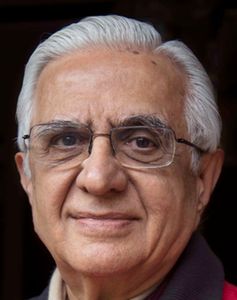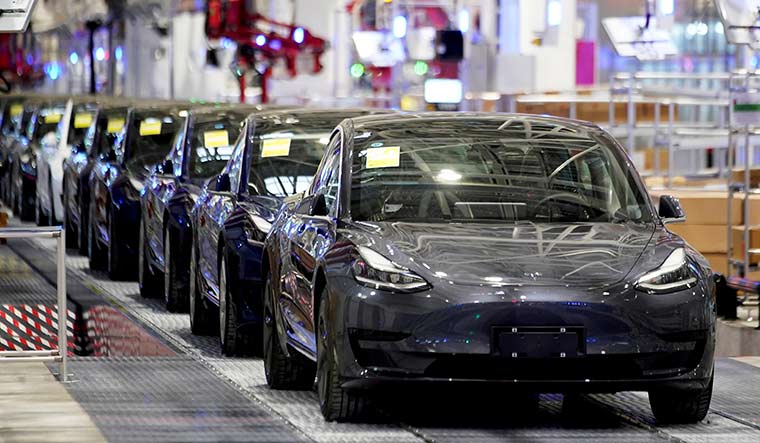Many Indians are perplexed that China has moved far ahead of us. In 1979, China’s GDP was $178.28 billion; India was at $152.99 billion. That’s when Deng Xiaoping launched China’s economic reforms, a transformative opening to pervasive privatisation. P.V. Narasimha Rao’s radical economic reforms followed in 1991, just 12 years later, converting crisis into opportunity. Today? India is a $3.3 trillion economy; per capita income $2,277. China is at $19 trillion; per capita income $12,556 (World Bank). Former foreign secretary Shyam Saran says: India is receding in China’s rear-view mirror.
Early years
Consider recent history. India and China won autonomy in 1947 and 1949; that was our ‘Independence’; for China, ‘Liberation’. Our national endowment was comparable: both massive, populous states, projecting high ambitions for the future. The political systems? India’s democracy with regular elections contrasted with China’s ‘dictatorship’ of the Communist Party.
The on-ground experiences of the first three decades were totally different. India fought three wars, with China in 1962, with Pakistan in 1965 and 1971, yet development moved ahead at a placid pace. China saw faster development, but traversed three catastrophic upheavals. 1. The Land Reforms of 1950-53 with the eradication of the landed gentry, the killings of some 2,00,000 to 5 million, and imposition of the collectivist ‘commune’ system. 2. The Great Leap of 1958-61 producing vast upheaval, and a famine that killed 30 million. 3. The Cultural Revolution of 1965-71 closed the entire education system for 5 to 7 years, killing 1 to 1.5 million of the intelligentsia and others. Those disasters frame today’s China. Massive suffering has steeled the Chinese people, guiding today’s ambitious drive.
Between 1979 and 2007, China’s annual economic growth averaged 9.9 per cent—the fastest in world history. And India? Between 1980 and 2005, it was 5.8 per cent—that’s a wholesome growth rate, a winner in most situations. That was a whole lot better than the miserable 3 per cent of the first three decades, yet much behind China’s numbers. It mattered, because we have always seen ourselves in competition with China.
The 1962 border war remains a massive trauma on India’s national psyche; in China its impact was minuscule. Why? Partly because we lost badly. And we have hidden from our people hard truths of how India-China relations were mishandled in the formative years, 1949-62. A.S. Bhasin’s book, Nehru, Tibet and China (2021), is a graphic, persuasive account of those years. Indian people deserve the facts, to understand their own follies. Sure, the Chinese were not angels—they ruthlessly exploited the situation, cynically engineered events to their own advantage. International affairs is not a picnic.
Divergent tracks
Back to our question: Why those hugely different economic development outcomes? A response: Behind superficially comparable numbers of 1979, lay major differences. That has steered later trajectories.
First, China’s brutal, total agricultural reform of the early 1950s, despite the inconsistencies of the commune system, produced vast improvements in productivity. Today, by rough count, China’s agricultural productivity is double that of India’s. Our agriculture has a top layer of efficient big producers, plus much larger subsistence farming, shackling the majority. There’s no appetite for farm reform.
Second, from the outset, China radically transformed its educational system. Two examples. One: Each summer, the country is mesmerised by a three-day exam, the gaokao. It determines placements all in central and provincial universities, with almost no ‘reservations’. It runs like clockwork. A major change in 2021: the entire system of tutoring institutes has been reined in. Contrast that with our tutoring factories that virtually displace the schooling system. Two: Today, 1.13 million Indians study abroad. Our National Education Policy (NEP) holds a faint hope that foreign campuses may open, but nothing is on the horizon. China hosts multiple foreign universities and institutes, with zero nationalist hang-ups. Our NEP 2020 is followed by NEP 2022—is that policy consistency?
Third, Skill Development. China’s actions began in the 1950s. Every manufacturing unit must operate a ‘part-work part-study’ school. I visited three in 1964, and wrote a six-page analysis, as a second secretary at Beijing. Head of Mission Jagat Mehta sent that to the Education Commission in New Delhi (see Diplomacy at the Cutting Edge, 2016, p. 69). Nothing happened. In the 60s and 70s, India set up 2,500 state-run ‘Industrial Training Institutes’, with large grounds, fine buildings, but poor scholastic infrastructure; teachers were appointed via patronage—sadly, almost an Indian norm. These ITIs exemplify an inability to take good ideas to productive outcomes. The National Skill Development Corporation, created in 2008, failed owing to the focus on short courses, pointless without first gaining a skill-base. A saving grace: our vigorous private institutes, of uneven, unregulated quality.
Fourth: Manufacturing. India is the global IT-BPM (business process management) power, employing 4.5 million well-paid, truly the world’s most competent. They generate large secondary and tertiary employment. That’s splendid. But no large economy can be a global player without a solid manufacturing base. All is not gloom. Our auto industry, consumer electricals and several others have done well, but a balanced industrial base simply does not exist.
According to a 2022 infographic by the UN Statistics Division, China’s manufacturing output is the world’s largest at $4 trillion, followed by the US at $2.3 trillion, Japan $1 trillion, Germany $800 billion, South Korea $459 billion, India $412 billion, Italy $314 billion, France $270 billion, the UK $253 billion and Indonesia $207 billion.
Fifth: Health care. India’s life expectancy is 69.66 years (2019); China’s 76.91 years (2019). Beyond that gulf, our indicators of child nutrition, maternal health and infant mortality are far worse, behind even those of Sri Lanka; recently Bangladesh overtook us. Our spending on health, as a percentage of GDP, remains around half of China’s; perhaps some numbers may have now gone up, thanks to vast new private sector investments.
This catalogue blends the good with missed opportunities. In essence, China’s reforms have been more strategic and inter-locking, involving not just the visible actions, but also accompanied by pervasive supplementary initiatives across multiple sectors, producing a multiplier, national effect. Indian reforms—often described as ‘stealthy’—involve unending compromises amidst competing demands. That undermines any master vision. Incremental reform, often reversed or modified to suit different, noisy constituencies, cannot produce big or lasting results.
Political context
The key question: Can India and China pursue economic cooperation? This depends on our political assessment. Are India and China destined to prolonged tension-contestation, open or simmering? Should we consider any possibility of cooperation? This is probably the most important question that New Delhi faces in crafting not just foreign policy but also national economic actions, plus societal policy, i.e. ‘domestic public diplomacy’.
The 2017 Doklam incidents at the Bhutan-China-India trijunction were followed by the 2020 Galwan clashes in Ladakh, causing the first border mortalities after 40 years. They were patently engineered by China. India was under economic stress, gaining nothing from new tensions. That inevitably produced unaffordable, higher military spending. After March 2020 we were in the throes of what looked like an uncontrollable Covid-19 pandemic. How could India possibly gain from major border tensions?
In my view, India’s handling of recent political events has shown dexterity, resolve, plus a major dose of strategic thinking—meaning not just great plans, but implementation of an integrated set of actions. Let me leave that crucial analysis of India’s foreign policy actions for another day.
An India-China hypothesis
Diplomacy is the art of the possible. It does not and cannot operate on worst-case scenarios. Flexibility, as long as national interest is served, is the name of the game. It must take the long view, plus calculation of future, sustainable benefit and potential loss. How should we anticipate the development of trade, investments and other economic exchanges with China over the next few years?
As 2022 draws to a close, we are perhaps poised for a reset to relatively ‘normal’ economic relations. The experience of 2017-21 border tensions is not going away. It cannot be forgotten in New Delhi that this resulted from wilful actions, engineered cynically. Perhaps it owed to external and internal factors. That phase of egregious, aggressive Chinese diplomacy, across the board, also experienced by its other partner countries, may have come to its natural end. The why of that, the tensions directed from Beijing and their subsequent, gradual dissipation, demands examination.
Trade: The bilateral deficit will persist in a total two-way volume of $100+ billion (now overtaken by India-US trade, where we have a large positive surplus, with India-UAE not far behind). The bulk of our imports consists of essentials (solar panel, phone, power and telecom components). The stuff that comes to us on price arbitration—such as agarbattis, manja kite thread, religious statues—is something we should block, but fail to do. Gently put, perhaps economic rent is at work within India. And we must move forward rapidly, building production of APIs (active pharma ingredients), where we ceded manufacture to China. It comes back to our policy management. And remember, separating politics and trade makes sense—US-China trade continues, despite political pyrotechnics.
Also read
- Revisiting 1962 war with China: When India's prestige was in a shambles
- How India handles China will determine success of foreign policy
- What's the role of a partly undefined 4,075km border in Sino-Indian conflict
- Had India employed its Air Force in 1962, there would have been fewer casualties
- War of 1962: How Kumaoni, Sikh, Gorkha soldiers fought back valiantly in Namti
Investments and Technology Don’t throw out the baby with the bathwater. Monitor closely China’s inbound investments, but with a deft touch, guided only by national advantage, and careful strategic calculation—what yields long-term gains for India? Use smart controls. India has a vast manufacturing space to fill out, to grow and develop. China has investible funds. And we are the world’s largest under-exploited market, with some 900+ million adult and youthful consumers. BTW, the Chinese domestic market, partly saturated, still offers potential for India. (New York Times, July 30, 2022: luxury mattresses @ Rs59 lakh each, sold by Australia’s A.H. Beard’s 50 stores across China, now face doldrums).
IT industry and people: Indian companies with subsidiaries in China do well, but China imposes NTBs (non-tariff barriers) against the standard Indian model of IT centres mainly doing off-site work. Some wonder if that model might run out of steam (Financial Times, August 3, 2022, Nomura prognosis). But consider: 300+ of the top 500 global companies run their own R&D centres in India. That’s great jobs for some, but what does India really gain? Why can’t India’s own R&D engine become agile, fecund?
There’s no silver bullet for India. B.R. Ambedkar’s dream of ‘social democracy’ remains distant. Lots of outstanding actions, success stories, but an equal crop of failures. And stunted national impact. Since 2014, the Modi government has done things that predecessors only talked about—household sanitation, universal electric power, cooking gas supply, road connectivity. But major challenges persist: universal literacy, fortifying the national manufacturing base, and, above all, moving forward in closer national harmony. Must the democracy-loving Indian Elephant always trail the authoritarian, hubris-laden Chinese Dragon?
Economists speak of ‘virtuous circles’—when objective conditions mesh, each positive action influences other elements, which is charged into further benefits. That cascades forward to higher growth. Right now, thanks to good FDI flows, and a high ‘purchasing manager’s index’ (a term for domestic business confidence), we could be approaching a sweet spot. Prime Minister Modi’s Independence Day call for a new drive against corruption and nepotism will help, if it produces real action. Simply put: Shall we deliver? Walk the talk?
—The writer is a former ambassador, teacher and writer.




